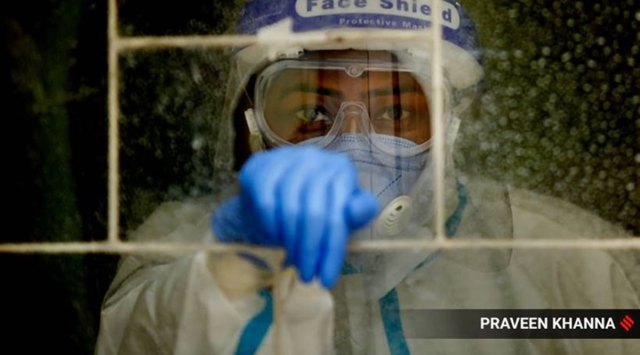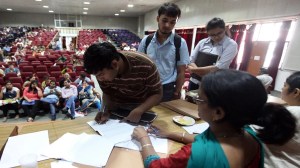- India
- International
Delhi: Southeast district sees highest Covid prevalence, North & Central close behind
Overall, the results showed that 29.1% of those surveyed across the capital have already been infected and recovered, against the first survey which had a prevalence rate of 22.86%.
 The state discharged 5363 patients following treatment yesterday, putting the total number of recoveries at 5,02,740. (Representational)
The state discharged 5363 patients following treatment yesterday, putting the total number of recoveries at 5,02,740. (Representational)At 33.2%, the Southeast district showed the highest prevalence rate of Covid-19, according to the second serological surveillance results. This is a 50% jump as compared to the first survey, when it reported a prevalence rate of 22.12%. The district is home to neighbourhoods such as Nizamuddin, Kalkaji and Sarita Vihar.
Overall, the results showed that 29.1% of those surveyed across the capital have already been infected and recovered, against the first survey which had a prevalence rate of 22.86%.
The second survey was conducted by the Delhi government in the first week of August. “The reason for a high jump of 50% in the sero survey prevalence rate in Southeast Delhi is because the areas which witnessed a low prevalence average are now seeing a higher rate. In one district, the rate was 27.7%, which has increased slightly to 29.6%,” said Health Minister Satyendar Jain, while announcing the results on Thursday.
In the previous survey conducted by the National Centre for Disease Control (NCDC) in July, Covid-19 prevalence of more than 20% was seen in eight districts. The Central, Northeast, and Shahdara districts showed the highest prevalence of over 27%, indicating that the population in these districts has been exposed to the virus to the largest extent. However, in the present survey, 10 out of 11 districts have more than 20% prevalence. After Southeast, North and Central districts are at 31.6% and 31.4% respectively.
Officials said the sample size for the survey was calculated as 15,000. Multi-stage sampling was done to select participants in each ward, within the area of Delhi government dispensaries and primary urban health facilities, through a team of local frontline health workers.

The median age of the participants was set at 32 years. Any individual who was included in the NCDC survey was not included in the second round. “The sample selection was completely scientific; the list of those whose samples would be collected was prepared by experts at Maulana Azad Medical College. This depicts the criteria of the area, age group, and the process of collecting samples… People belonging to every class were included in the sero-survey — those living in slums, the middle-class and upper-middle-class,” said Jain.
In this round, participants were categorised based on age groups — 25% below 18 years; 50% between 18-50 years; and 25% above 50 years of age. A prevalence rate of 34.7% has been found in people below 18 years of age, 28.5% in people between 18-50 years, and 31.2% in people above 50 years.
“As per scientists, antibodies stay in your body for three-four months and can last up to seven-eight months. Along with this, t-cells or memory cells also develop. This means if a person has been infected by corona in the past, it is very probable that he/she will not get infected again,” said Jain.
NCDC director Dr Sujeet Kumar Singh, however, said: “Having antibodies is the only protection. The question is as to how long these will be present… For that, we need to follow a person for at least six months or more.”
Apr 23: Latest News
- 01
- 02
- 03
- 04
- 05






































